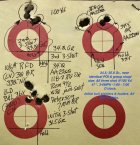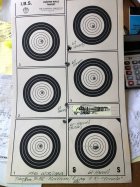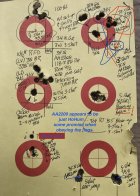Here are the results of initial testing using 118 Gr. bullets and Accurate Arms 2200. The platform: Ware/RFD LVS rifle (10.5#); Morrison 1:18" twist; B&L 4200/36X; Petersen 7mmBR brass; Rem. 71/2. The three "sacrificial" cases will be used to work up to the point of either excessive pressure, groups opening back up, or, a combination of the two. Today, will be mostly dedicated to obtaining useful DATA for this component combination. (Note: this paragraph edited to correct/compensate for [relying on] my poor memory. The action was TRUED/TIMED by [the late] Stan Ware, and the barrel is a Morrison, NOT a PacNor.)
Thus far, there has been no measurable case-head expansion, and extraction has been easy. I am expecting somewhat better precision before excessive pressure develops. Yes, the initial charge weight increases were LARGE, however, for something which may prove useful, grouping and pressure were as expected (increasing charge weight reduced vertical). From here, until excessive pressure is encountered, increases will be via .5 Gr. increments. I do NOT recommend this DATA to be used - only to point out that, for the thirty caliber expansion ratio (small case-capacity, short/light weight bullet combination), there are MANY potentially good powder options.
THE big question: how might they perform over a range of temperatures and time . . . Time and weather permitting, several other powders will be put to the test. That said, to PROVE the worth, following load development, one must move on to tournament shooting. Will the load hold it's own against competition proven combinations - that is, "where it's at". The quest is where the fun resides.
Time and weather permitting, several other powders will be put to the test. That said, to PROVE the worth, following load development, one must move on to tournament shooting. Will the load hold it's own against competition proven combinations - that is, "where it's at". The quest is where the fun resides.  RG
RG
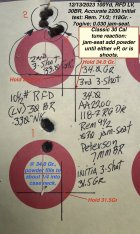
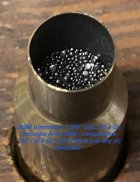
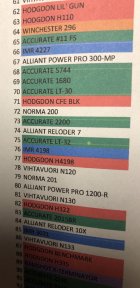
Thus far, there has been no measurable case-head expansion, and extraction has been easy. I am expecting somewhat better precision before excessive pressure develops. Yes, the initial charge weight increases were LARGE, however, for something which may prove useful, grouping and pressure were as expected (increasing charge weight reduced vertical). From here, until excessive pressure is encountered, increases will be via .5 Gr. increments. I do NOT recommend this DATA to be used - only to point out that, for the thirty caliber expansion ratio (small case-capacity, short/light weight bullet combination), there are MANY potentially good powder options.
THE big question: how might they perform over a range of temperatures and time . . .



Last edited:










